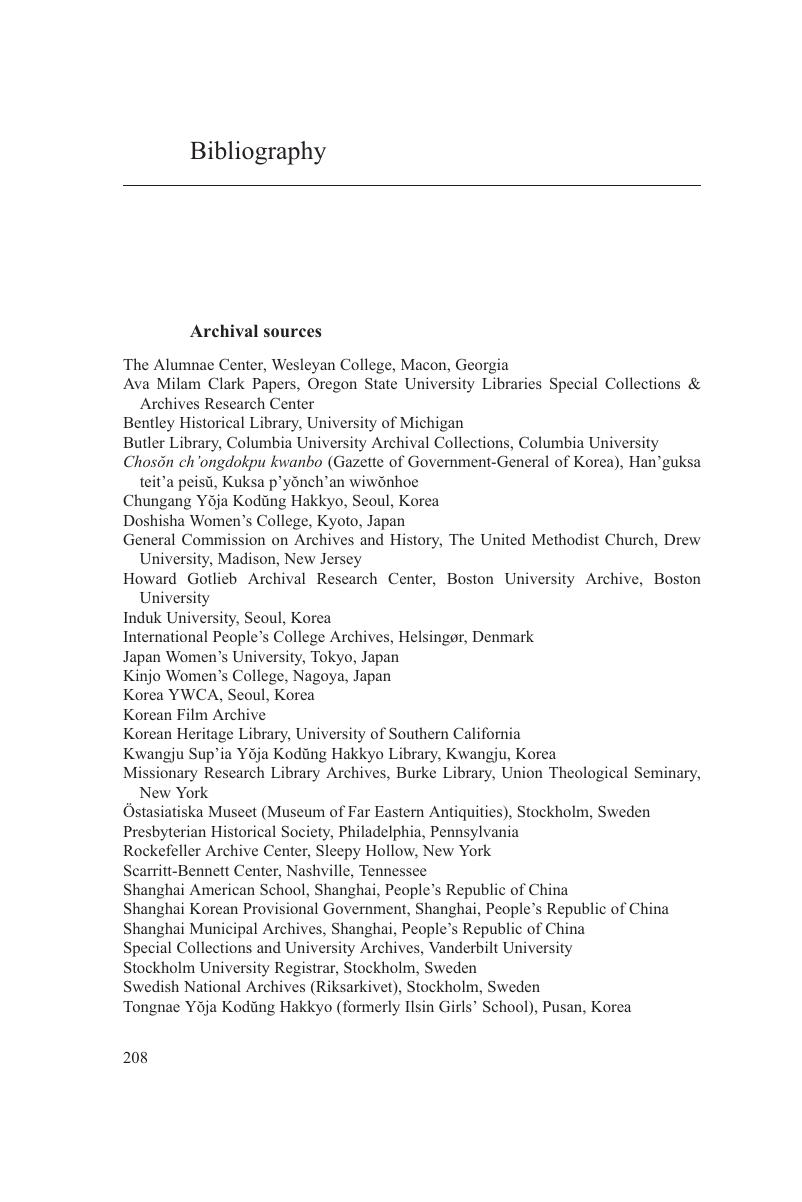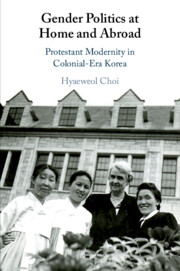Book contents
- Gender Politics at Home and Abroad
- Gender Politics at Home and Abroad
- Copyright page
- Contents
- Illustrations
- Notes on Romanization and Translations
- Preface and Acknowledgments
- Introduction
- 1 Ideology: “Wise Mother, Good Wife”
- 2 Materiality: The Experience of Modern House and Home
- 3 Crossing: Selfhood, Nation, and the World
- 4 Labor: Searching for Rural Modernity
- Conclusion
- Bibliography
- Index
- References
Bibliography
Published online by Cambridge University Press: 20 July 2020
- Gender Politics at Home and Abroad
- Gender Politics at Home and Abroad
- Copyright page
- Contents
- Illustrations
- Notes on Romanization and Translations
- Preface and Acknowledgments
- Introduction
- 1 Ideology: “Wise Mother, Good Wife”
- 2 Materiality: The Experience of Modern House and Home
- 3 Crossing: Selfhood, Nation, and the World
- 4 Labor: Searching for Rural Modernity
- Conclusion
- Bibliography
- Index
- References
Summary

- Type
- Chapter
- Information
- Gender Politics at Home and AbroadProtestant Modernity in Colonial-Era Korea, pp. 208 - 231Publisher: Cambridge University PressPrint publication year: 2020



